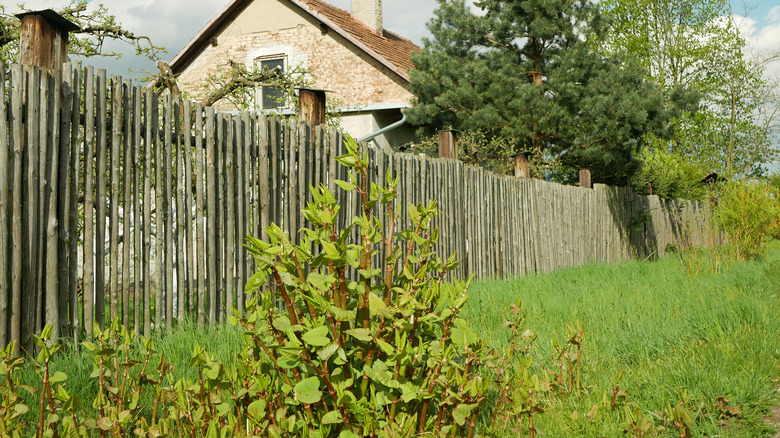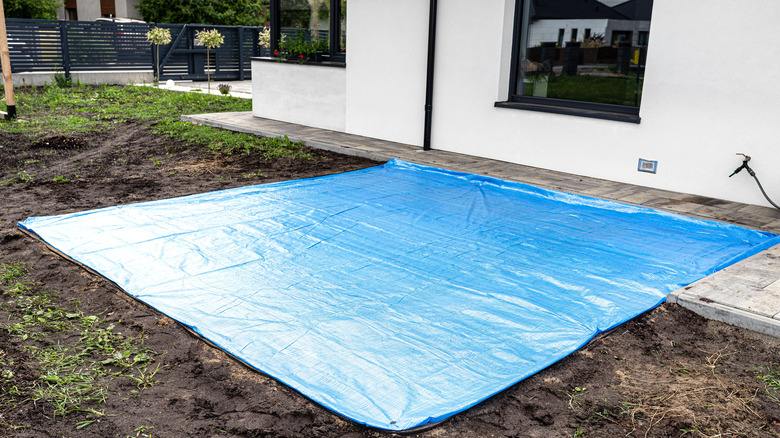The Most Effective Methods To Kill Japanese Knotweed (& 1 To Avoid)
Japanese knotweed is a perennial herbaceous plant that is considered invasive in many states. This plant can form a colony of shrubs rising 6 to 10 feet high and extending as far as it has space to grow. The exotic plant was first brought to American soil as an ornamental shrub and to fight soil erosion in the 19th century. Since then, it has spread to about 36 states along the East and West Coasts, and it keeps claiming more regions. Japanese knotweed can survive in saline soil, endure prolonged drought, and put up with high temperatures. Growing out of rhizomes, a single shrub could possibly develop a vast underground network of rhizomes covering a 30,000-square-foot area. If it takes root in your garden or yard, then removing it can be quite a challenge. The best ways to do so are smothering or cutting it or using plant lice.
It's usually more effective to keep Japanese knotweed out of your garden than to get rid of it. But mishaps happen, and despite your best efforts, the invasive shrub could take a footing in your soil, expand, and crowd your plants out. In which case, you can prepare yourself for a long war of attrition against a relentless plant that simply refuses to die. The many methods you can use to kill Japanese knotweed vary in efficacy, but they all take years of hard work. Some of these methods are good for the environment while others pose a grave risk to the soil, flora, and your health.
Smother it, cut it, or go biological
Smothering Japanese knotweed is quite effective. It also requires the least work and doesn't disturb the soil. Allow the bush to grow throughout the spring and cut it back to the ground in the first week of June. Next, cover the affected area with a layer of mulch. Then, spread a thick and dark tarp over the mulch and weigh down the edges with cinder blocks. Making sure there are no holes in the tarp, cover it with another layer of mulch. The tarp should remain undisturbed for five years to smother the stubborn rhizomes.
Cutting the stalks of the bush is another method, but it has to be done three times every year. The idea is to wait for the plant to transfer the energy stored in the rhizomes up the stalks to make leaves. By cutting the stalks and newly formed leaves, you force it into producing new shoots until its energy is depleted. Always cut the cane below the last node above the ground. The first cut is in early June, followed by a cut in July and the last one is in late August. Repeat this process for at least three years.
A third option uses plant lice or psyllids. For Japanese knotweed, a psyllid from Japan called Aphalara itadori is showing promising success. It feeds on the leaves and shoots and fights the spread of the invasive plant. This biological solution is approved in the USA.
Don't use herbicides
Japanese knotweed is one of those plants you shouldn't grow right next to your home. And when you're in an ongoing war with this weed, it's tempting to turn to herbicides. Herbicides promise faster results and less manual work than other methods. However, with this fast-growing bush, herbicides could take between three to five years of regular well-timed applications to eradicate knotweeds. Moreover, herbicides often contain dangerous chemicals that are either problematic or downright dangerous. Here's a rundown of the main active ingredients in herbicides used against Japanese knotweed and their potential harm.
Herbicides that contain glyphosate are quite effective against the invasive plant, but the chemical is considered a carcinogen by the International Agency for Research on Cancer (IARC), among other institutions. Imazapyr is another herbicide that kills all plants it comes in contact with and has a half-life between one to five months in the soil. As for dicamba, it stays in the soil for seven to 10 months and since it's water soluble, leaching is a potential hazard. Meanwhile, triclopyr is toxic if consumed or when it touches the skin and exposure to it can cause permanent eye damage.
When it comes to herbicides as a solution to Japanese knotweed, there are less harmful ways to kill weeds in your lawn. Between the health hazards and risks to the nearby trees and other plants, choosing the mechanical or biological methods seems safer, wiser, and more productive.


